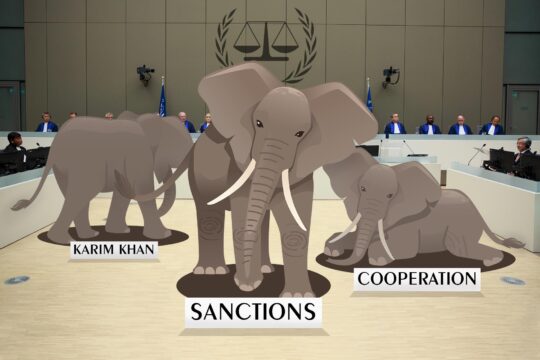Thousands of images of dead Syrians smuggled out of the country by a photographer known as "Caesar" showed the world the horrors detainees allegedly suffered at the hands of President Bashar al-Assad's regime.
The so-called Caesar files constituted key evidence in a landmark German trial dealing with crimes against humanity in Syria, which handed down its first verdict on Wednesday.
In the first court case worldwide over state-sponsored torture by Assad's regime, Eyad al-Gharib, 44, was sentenced by a German court to four and a half years in prison for complicity in crimes against humanity.
The Caesar photos showing Syrians who had been flogged, strangled, electrocuted or starved to death in detention centres have also given their name to a series of US economic sanctions.
A defector who had worked as a photographer for the Syrian military police, Caesar risked his life to take the 53,275 images of 6,786 corpses, including only one woman, between May 2011 and August 2013.
- Escape from Syria -
Horrified by the thousands of images he had taken, Caesar contacted the Syrian opposition who, after asking him to collect as many photos as possible, organised for him to be smuggled out from Syria.
Each of the corpses photographed bears a number, often inscribed on the skin. Some of them have no eyes, while most are naked or in their underwear.
The world was stunned by the brutal snapshots in 2014 when they were used as part of a report by three former international prosecutors.
The images then gave their name to the Caesar Act in the US, which provides for economic sanctions against Syria.
In June 2020, a new set of sanctions came into force under the law, targeting many members of the Syrian president's family and entourage, including his wife Asma al-Assad.
The photos were also shown last year in a court in Koblenz, Germany in the crimes against humanity trial against Gharib.
- 'I won't forget' -
They were scrutinised during the trial by forensic scientist Markus Rotschild, and were deemed to constitute overwhelming material evidence.
"Allow me to make a personal remark. I won't forget these photos," said judge Anne Kerber as the verdict was handed down against Gharib, a former member of the Syrian intelligence services.
The images also provided a basis for international arrest warrants issued by France and Germany in 2018 against senior members of the regime, including Jamil Hassan, the former head of the air force intelligence service.
Since his escape from Syria, Caesar and his friend "Sami", who helped him get the photos out, have been living in total anonymity.
"We are trying to protect him, he has to change his residence regularly, it's very hard for him and his family," Syrian lawyer Ibrahim al-Kasem, based in Berlin, told AFP.
Kasem manages the photos and liaises with families who believe they have spotted a missing relative in them.
Caesar spoke publicly for the first time, his face concealed beneath a hood, at a US Congress hearing in 2014.
He was heard again in 2020 before the Foreign Affairs Committee of the US Senate.
Sami, for his part, spoke to German police as part of the investigation that led to the Koblenz trial.


